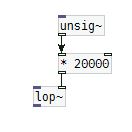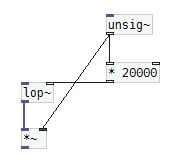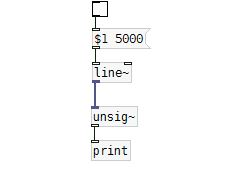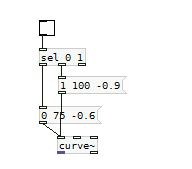@JMC64 I have not checked it, but I assume you have created a ramp with the shape of the brown/red curve.
In the middle (to the end of) analogue olden days the way to control a voltage with another was through an opto-isolator.
The green line is its input signal. A voltage of 0.5V for 100ms.
0.5V because that was the necessary voltage to set "on" and 100ms because that was the time necessary to get the output side to "full".
Once the input voltage was removed it took about another 75ms before the output returned to zero.
So you have found the non-linearity of the control.
In the synth application the input would have been either a voltage from a keyboard key, or a square/sawtooth lfo wave probably for a repeated pulse, if that was what was selected. Well actually it could have been any waveform that the synth could produce...... depending on where it was patched by the operator.
The problem is that the led in the opto-isolater takes time to ramp down the resistance of the light sensitive resistor (so that the output voltage rises), and so very short control pulses will not get to full voltage on the output. Longer ones will be fine...... the Led can be held "on" for as long as you like......
The low pass filter cutoff and resonance might be harder to evaluate, but this paper....... 44.dafx2013_submission_56.pdf has all the information you will need.
David.






